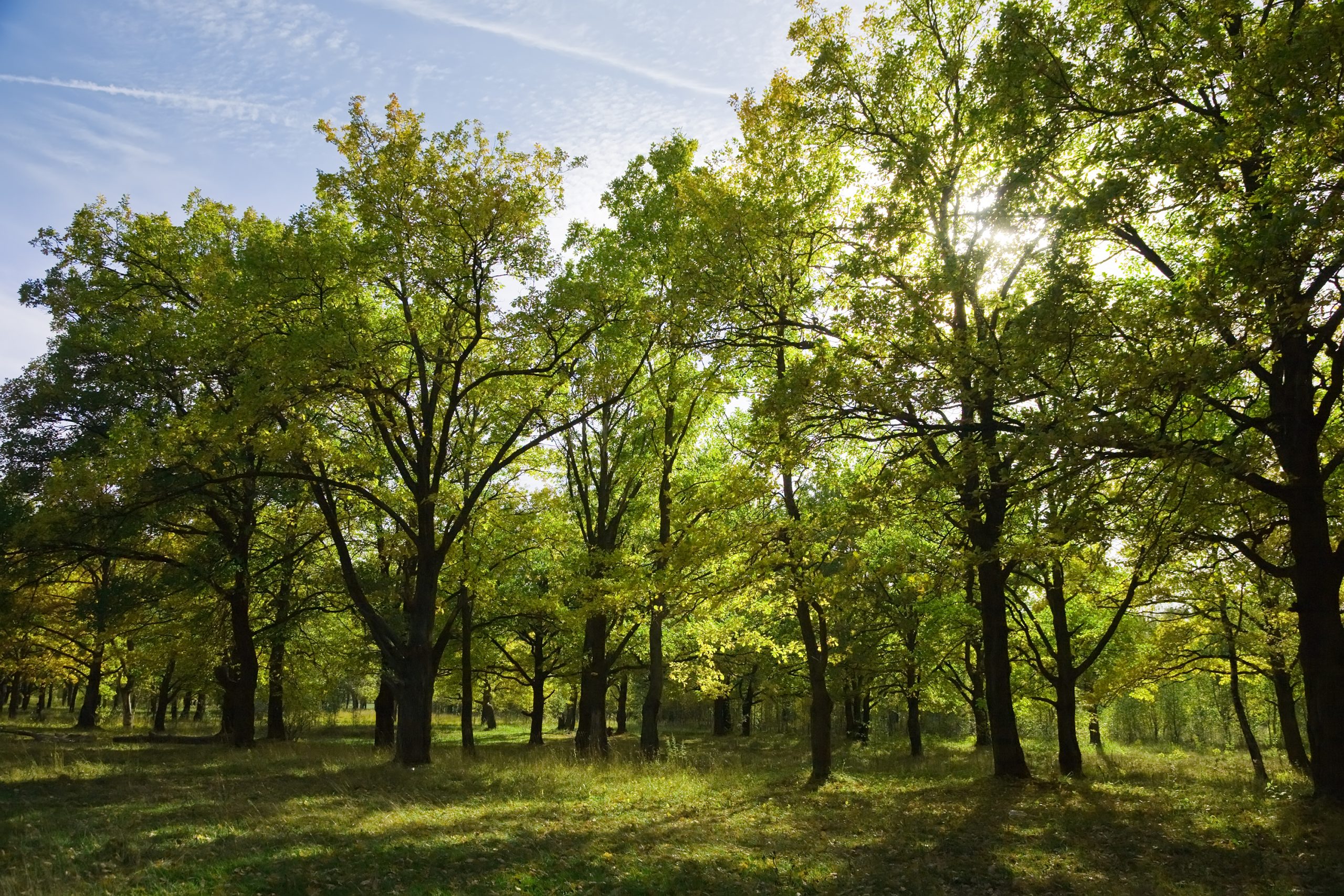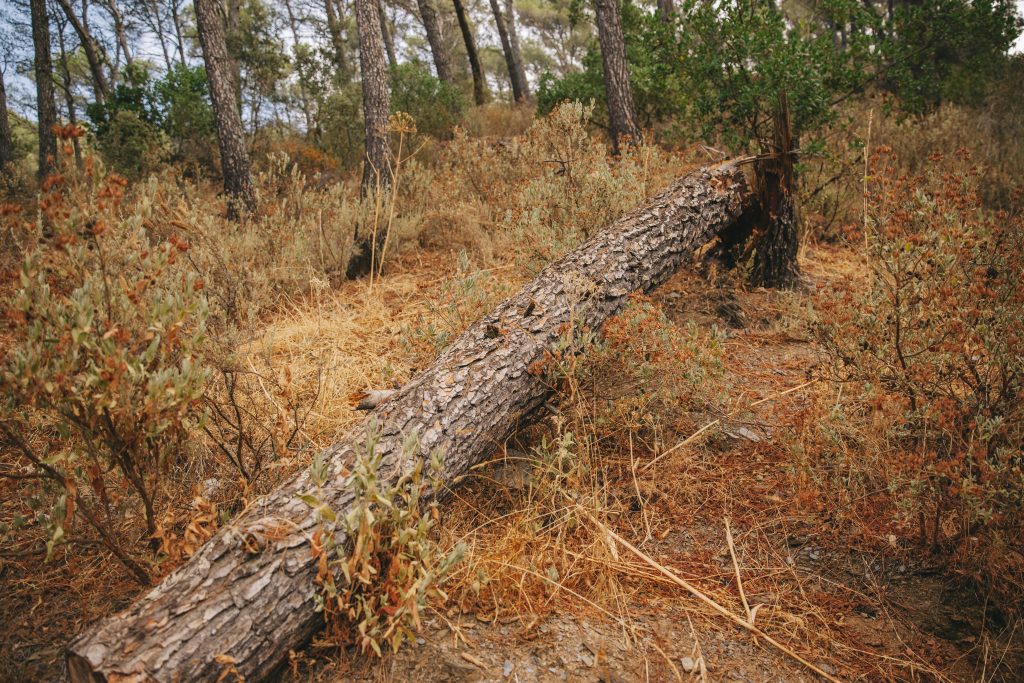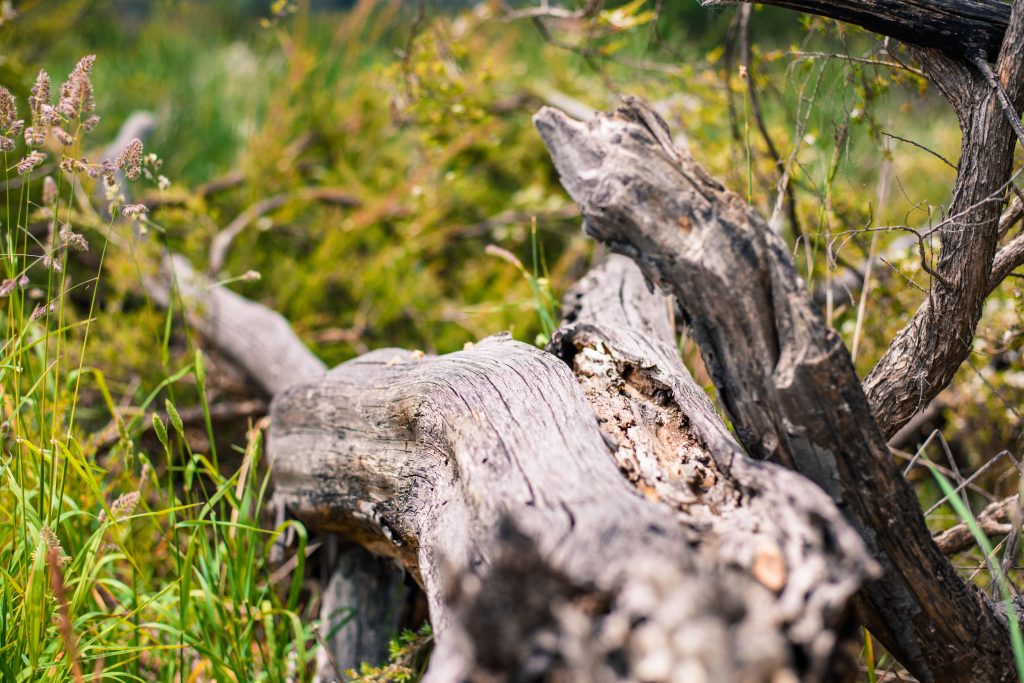UNDERSTANDING THE DIFFERENT TYPES OF TREE DISEASES AND HOW TO IDENTIFY THEM
UNDERSTANDING THE DIFFERENT TYPES OF TREE DISEASES AND HOW TO IDENTIFY THEM
Trees play a fundamental role in supporting ecosystems, the environment, and human well-being in numerous ways:

- Biodiversity Conservation: Trees provide habitats and food sources for a wide variety of plant and animal species. Forests are some of the most biodiverse ecosystems on Earth, housing countless species and contributing to global biodiversity.
- Ecosystem Services: Trees offer a range of ecosystem services that benefit both nature and people. They purify air by absorbing pollutants, regulate water cycles by absorbing and releasing water, and provide valuable soil stability and erosion control.
- Carbon Sequestration: Trees are natural carbon sinks, absorbing carbon dioxide from the atmosphere during photosynthesis and storing it as biomass. This helps mitigate the impacts of climate change by reducing greenhouse gas concentrations.
- Climate Regulation: Trees play a vital role in regulating climate patterns. They release water vapor through transpiration, which cools the air and influences local and global climate patterns.
- Air Quality Improvement: Trees absorb pollutants such as sulfur dioxide, nitrogen oxides, and particulate matter, thereby improving air quality and reducing the negative impacts of air pollution on human health.
- Water Management: Trees help maintain balanced water cycles by capturing rainwater and reducing surface runoff. Their root systems enhance soil infiltration, prevent soil erosion, and reduce the risk of floods and droughts.
- Natural Resource Provision: Trees provide valuable resources such as timber, wood products, fruits, nuts, and medicinal compounds, contributing to local economies and livelihoods.
- Aesthetic and Recreational Value: Trees enhance the aesthetic appeal of landscapes, parks, and urban areas. They provide places for relaxation, recreation, and a connection with nature, which positively impacts mental and physical well-being.
- Wildlife Habitat: Forests and trees provide shelter, nesting sites, and food for various wildlife species, supporting healthy ecosystems and biodiversity.
- Cultural and Spiritual Significance: Trees have cultural and spiritual importance in many societies. They are often revered as symbols of growth, renewal, and interconnectedness with nature.
- Human Health: Access to green spaces with trees has been linked to stress reduction, improved mental health, and overall well-being. Trees contribute to cooler urban environments, reducing the heat island effect and related health risks.
- Economic Benefits: Trees contribute to economies through sectors like forestry, agriculture, and tourism. They can increase property values, attract businesses, and create employment opportunities.
- Sustainable Agriculture: Trees are important in agroforestry systems, providing shade, windbreaks, and nitrogen fixation for crops. This sustainable approach enhances soil fertility and crop productivity.
- Educational Opportunities: Trees offer educational value by promoting environmental awareness and providing opportunities for learning about ecosystems, biology, and environmental stewardship.
In summary, trees are integral to the health of ecosystems, the balance of our environment, and the well-being of humanity. Recognizing their importance and implementing sustainable practices for their conservation and management is essential for a harmonious coexistence between people and the natural world.
Threats Posed by Tree Diseases to Tree Health and Overall Ecological Balance
Tree diseases pose significant threats to tree health and overall ecological balance, with potential cascading effects on ecosystems and the environment. Here are some key threats posed by tree diseases:

- Loss of Tree Health and Vitality: Diseased trees often experience reduced growth, weakened structure, and decreased ability to photosynthesize, leading to diminished overall health and vitality. This makes trees more susceptible to other stressors, such as environmental changes, pests, and extreme weather events.
- Biodiversity Loss: When tree species are affected by diseases, it can lead to declines in their populations or even local extinctions. This loss of tree species diversity can disrupt ecosystems, impact food chains, and reduce habitats for various wildlife species.
- Habitat Degradation: Diseased trees can lose their canopy cover, reducing the availability of habitats for birds, insects, and other organisms that depend on trees for nesting, shelter, and food. This disruption can lead to shifts in species composition and ecosystem dynamics.
- Invasive Species Spread: Some tree diseases are introduced by invasive pathogens that can spread rapidly through susceptible tree populations. Invasive diseases can have severe impacts on native trees that lack natural defenses against these pathogens.
- Changes in Carbon Sequestration: Diseased trees may have reduced photosynthetic capacity, leading to decreased carbon dioxide uptake and storage. This disrupts the ability of forests to act as carbon sinks, potentially exacerbating climate change.
- Altered Nutrient Cycling: As diseased trees decay or die, nutrient cycling processes in ecosystems can be disrupted. This can affect soil fertility, nutrient availability, and the health of other plant species within the same ecosystem.
- Increase in Pests and Insects: Tree diseases can weaken trees, making them more susceptible to insect infestations. Pests and insects can introduce additional stress and further compromise the health of trees.
- Forest Fragmentation: In areas heavily affected by diseases, tree mortality can lead to gaps in forest canopies. This fragmentation can alter microclimates, disrupt animal movement, and impact ecosystem connectivity.
- Erosion and Soil Degradation: Diseased trees may lose their root systems, leading to soil erosion and reduced stability. This can result in increased sedimentation in water bodies, negatively impacting aquatic ecosystems.
- Loss of Ecosystem Services: Diseased trees provide fewer ecosystem services such as air purification, water regulation, and habitat provision. This loss can have far-reaching impacts on local communities, economies, and human well-being.
- Economic Impact: Tree diseases can harm industries reliant on trees, such as timber, paper, and fruit production. The economic impact extends to industries like tourism and outdoor recreation that depend on healthy forests.
- Resistance to Treatment: Some tree diseases can be challenging to manage or treat effectively. The spread of resistant strains of pathogens can lead to limited options for controlling disease outbreaks.
In conclusion, tree diseases have the potential to disrupt ecosystems, impact biodiversity, and alter vital ecosystem services. Addressing and managing tree diseases is crucial for maintaining the health of forests, promoting biodiversity, and ensuring the overall ecological balance of natural landscapes.
Common Types of Tree Diseases
Tree diseases encompass a wide range of disorders caused by various pathogens that affect the health and vitality of trees. Here are some common types of tree diseases along with examples:
- Fungal Diseases: Fungi are one of the primary causes of tree diseases. They can infect various parts of a tree, including leaves, stems, branches, and roots. Common fungal tree diseases include:
- Dutch Elm Disease: A fungal infection that affects elm trees, causing wilting and eventually killing the tree.
- Oak Wilt: A disease caused by a fungus that affects oak trees, leading to leaf discoloration, wilting, and death.
- Anthracnose: A group of fungal diseases that cause spotting, browning, and distortion of leaves in a wide range of tree species.
- Cedar Apple Rust: A fungal disease that affects apple and cedar trees, causing distinctive orange spore-producing structures on the leaves.
- Bacterial Diseases: Bacteria can enter trees through wounds, causing a variety of symptoms. Bacterial diseases are often spread by insects, wind-driven rain, or contaminated tools. Common bacterial tree diseases include:
- Fire Blight: A bacterial disease that affects trees in the rose family, causing blackened, wilted shoots resembling fire damage.
- Bacterial Leaf Scorch: A disease that affects many tree species, causing marginal leaf scorching and premature leaf drop.
- Viral Diseases: Viruses can infect trees, leading to a range of symptoms such as discoloration, stunting, and distortion. Viruses are often spread by insects that feed on plant sap. Common viral tree diseases include:
- Apple Mosaic Virus: A viral disease affecting apple trees, causing mosaic patterns and distortion of leaves.
- Plum Pox Virus: A viral disease affecting stone fruit trees, leading to reduced fruit quality and yield.
- Parasitic Diseases: Parasitic plants can attach themselves to trees and derive nutrients from the host tree. These plants can weaken and eventually kill the host tree. Common parasitic tree diseases include:
- Mistletoe: A parasitic plant that attaches to tree branches, weakening the host tree and potentially causing deformities and reduced growth.
- Broomrape: A parasitic plant that forms root connections with tree roots, causing stunted growth and reduced vigor.
- Root Diseases: Pathogens that affect tree roots can lead to reduced water and nutrient uptake, ultimately impacting tree health. Common root diseases include:
- Armillaria Root Rot: A fungal disease that attacks tree roots, causing decay and ultimately leading to tree death.
- Phytophthora Root Rot: A disease caused by waterborne pathogens, leading to root decay and reduced tree vitality.
- Cankers and Wilts: Cankers are localized areas of dead bark and cambium tissue, often caused by fungal or bacterial infections. Wilts are diseases that affect water-conducting tissues, leading to wilting and death of branches or the entire tree.
- Cytospora Canker: A fungal disease that causes cankers on the branches of various tree species.
- Verticillium Wilt: A disease caused by soil-borne fungi, leading to wilting and death of branches.
Understanding the different types of tree diseases is crucial for early detection, proper diagnosis, and effective management strategies to protect trees and maintain ecosystem health.
About Murray, Utah
Murray is a city situated on the Wasatch Front in the core of Salt Lake Valley in the U.S. state of Utah. Named for territorial governor Eli Murray, it is the state's fourteenth largest city. According to the 2020 census, Murray had a population of 50,637. Murray shares borders with Taylorsville, Holladay, South Salt Lake and West Jordan, Utah. Once teeming with heavy industry, Murray's industrial sector now has little trace and has been replaced by major mercantile sectors. Known for its central location in Salt Lake County, Murray has been called the Hub of Salt Lake County. Unlike most of its neighboring communities, Murray operates its own police, fire, power, water, library, and parks and recreation departments and has its own school district. While maintaining many of its own services, Murray has one of the lowest city tax rates in the state.
Neighborhoods in Murray, Utah
Murray Oakes, Grant Park, Southwood Park, Murray Park, Murray Park Restrooms, Willow Pond Park, Neighborhood Veterinary Care
Things To Do in Murray, Utah
Bus Stops in Murray, Utah to Truco Services, Inc.
Bus Stop in Murray Central Station (Bay C) Murray, Utah to Truco Services, Inc.
Bus Stop in State St @ 4801 S Murray, Utah to Truco Services, Inc.
Bus Stop in Murray North Station Murray, Utah to Truco Services, Inc.
Bus Stop in State St @ 4949 S Murray, Utah to Truco Services, Inc.
Bus Stop in Murray Central Frontrunner/Trax Station Murray, Utah to Truco Services, Inc.
Bus Stop in Murray Blvd / Vine St (SB) Murray, Utah to Truco Services, Inc.
Bus Stop in State St @ 3925 S Murray, Utah to Truco Services, Inc.
Bus Stop in State St @ 4824 S Murray, Utah to Truco Services, Inc.
Bus Stop in State St @ 5223 S Murray, Utah to Truco Services, Inc.
Bus Stop in Murray Blvd / Allendale Dr (NB) Murray, Utah to Truco Services, Inc.
Bus Stop in Murray Blvd @ 5039 S Murray, Utah to Truco Services, Inc.
Bus Stop in State St @ 4721 S Murray, Utah to Truco Services, Inc.
Driving Directions in Murray, Utah to Truco Services, Inc.
Driving Directions from Woodruff Tree Trimming and Removal to 4640 Commerce Dr, Murray, UT 84107, USA
Driving Directions from Reliable Tree Care to 4640 Commerce Dr, Murray, UT 84107, USA
Driving Directions from Tree Pro-Tech to 4640 Commerce Dr, Murray, UT 84107, USA
Driving Directions from Prestige Tree And Landscape to 4640 Commerce Dr, Murray, UT 84107, USA
Driving Directions from Excellence Tree & Landscape to 4640 Commerce Dr, Murray, UT 84107, USA
Driving Directions from Amen Trees to 4640 Commerce Dr, Murray, UT 84107, USA
Driving Directions from Tim's Tree Care to 4640 Commerce Dr, Murray, UT 84107, USA
Driving Directions from Jordan Tree Service - Murray to 4640 Commerce Dr, Murray, UT 84107, USA
Driving Directions from Arbor Works to 4640 Commerce Dr, Murray, UT 84107, USA
Driving Directions from Diamond Tree Experts to 4640 Commerce Dr, Murray, UT 84107, USA
Driving Directions from Green Tree Arborist to 4640 Commerce Dr, Murray, UT 84107, USA
Driving Directions from TruCo Services to 4640 Commerce Dr, Murray, UT 84107, USA
Reviews for Truco Services, Inc. Murray, Utah
Emily Abercrombie
We had a great experience with TruCo! They were well priced, responsive and prompt. Michael was a pleasure to work with and gave us advice on which plants to put in where we took out our ugly old shrubs. I would highly recommend this company!!!
Michelle Turpin
TruCo Services gets 5 stars from us for customer service. We experienced a few issues with their services this last year and Rob Eccles in senior management, stepped in and immediately handled our issues. He was very committed to making sure they understood our expectations and would execute to make us happy.
Siobhan Billingsley
I work for a property management company and have the pleasure of working with Rob at a community in Sandy. He has been incredible to work with and always responds in a timely manner. He knows all the homeowners by name and address and is aware of all the "problem" areas when it comes to sprinklers. I never have to worry about following up with him because he always reaches out to provide me with an update. If you're looking to work with someone who takes pride in their job, is professional, and can solve the worst landscaping problems thrown your way, Rob is your guy. Thank you, Rob for all you do!
Jaime S.
We have used Truco at 2 of the complexes we manage, they have been great to work with. Good quality service, outstanding customer service with good communication. That's hard to find these days. I highly recommend them. Travis has been awesome to work with.
Jerusha Smart
We use TruCo for a majority of our properties and our home. While other landscaping companies we use come and go for various reasons like cost, communication issues, work performance, etc., TruCo is always consistent in price and work. Also, Rob is the best.

